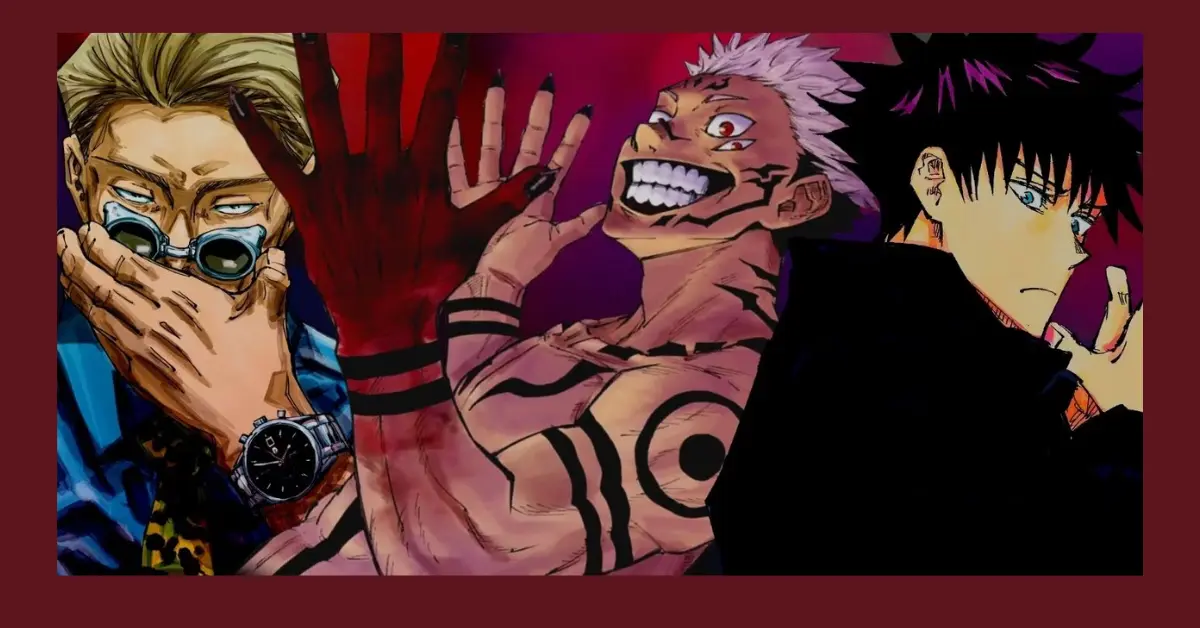Best Manga Covers: Stories are important to readers no matter what genre they prefer, and manga is no exception. However, the cover art for a manga is almost as crucial as the story itself in terms of getting people to pick it up in the first place. To wit: Koyoharu Gotouge’s Demon Slayer manga.
Not only do they use colour to bring out the characters’ individual traits, but they also use it in conjunction with a variety of other techniques to lead the viewer’s attention around the piece of art in a very organic way. Shapes and patterns are sometimes utilised to direct the eye of the reader or to symbolise a deeper message. Cover art for manga volumes consistently impresses as much as the stories they conceal.
1. Volume 2 Depicts The Demon King Meeting The Boy With Hanafuda Earrings
This is among the first examples of the usage of a form pattern to direct the focus of the viewer. This design reminds me of blood spatter. This form appears at the top, then again on Tanjiro’s arm, then again on Muzan’s shoulder, and finally at the bottom.
A bloody trail may have brought these two individuals together. The boy wearing the hanafuda earrings reminds Muzan of an old enemy, and Tanjiro’s desire for revenge against the man who murdered his family is intensified by the sight of his own blood.
- Anime Based On Manga: List of Top 7 Anime Shows Based On Manga
- 10 Anime Characters That Start With T
2. Volume 21 Captures A Photographic Moment
The backdrop colour and the way Yushiro is holding Tamayo’s hand evoke an old Japanese image of a couple, suggesting that the cover captures a moment of love that will never be repeated. The purple and pink tones and floral motifs help direct the eye around the composition.
Slowly drawing in the viewer’s attention to the bright red chair serves to draw attention to Tamayo and, perhaps, her significance in the battle against Muzan. Even the header text, which is presented in a gradient way to match the colours in Tamayo’s kimono, draws attention to her
3. Volume 4 Shows A Clash With A Loud Boar Man
It’s almost as if the background color, red, represents Inosuke’s attitude toward life: bright, striking, and demanding of attention. The black, which is shaped somewhat like lighting, alludes to a rattling experience, which is roughly how Inosuke’s first appearance could be described. Although the meaning of the colour red varies in Japan, it was traditionally worn by samurai as a sign of courage and bravery.
The annoyance felt by Tanjiro and Inosuke upon first meeting is heightened by the fact that, in western symbolism, the colour red is associated with anger. The incident also exemplifies Inosuke’s determination to prove he is superior to Tanjiro in strength and power.
4. Volume 9 Showcases The Sound Hashira With His Bling
This cover exudes a lively and ostentatious spirit, which is fitting for the extroverted Tengen. It’s mind-boggling without being chaotic because to the use of multiple gradient techniques and a variety of repeated colour schemes.
The pinks and blues in the background and on his headdress and swords flow nicely into the pinks and blues in the rest of his clothing and into the title. Tengen’s prominence is maintained by the uniform application of gold, from the dabbling with blue to the sword accents to the bands at the bottom.
5. Volume 14 Sings The Colors Of The Love Hashira
The use of vibrant neon tones is appropriate for Mitsuri, who is known for her positive attitude. The Love Hashira, which flows almost in a curve from the top to the centre and back down again, is represented primarily by the colour pink in the colour guide.
Green serves as an accent to pink but also brings attention back to the character’s focal point from off to the side. Also, Mitsuri looks like an ’80s pop idol, lending the cover an ’80s vibe.
6. Volume 6 Depicts The Insect Hashira’s Mask Of Beauty
This cover’s beauty belies what looks to be initial confusion. The title typography, Shinobu’s hair, and her entire costume all feature shades of purple, suggesting that this hue is the story’s central character. Shinobu’s beauty and serenity are immediately apparent, but it’s the pastel colours woven throughout her butterfly-patterned cloak that truly steal the show.

Image Source: cbr
When you zoom out, you can see that the background is a riot of colour, which may be meant to represent Shinobu’s internal emotional chaos.
7. Volume 16 Conveys The Tranquilities Of Love
There seems to be some variation between this cover and the others. The sensation is distinct from all the others. The gradual transition from white to blue and back to white is quite soothing. The sensation is like that of the cover’s protagonists, Amane and Kagaya.
With Amane in blue and Kagaya in white, the blending itself feels like a representation of the way in which their personalities complement each other. The leader of the Hashira and his wife have a peaceful love that permeates the air.
8. Volume 1 Showcases The Darkness Of Tragedy
The zigzag pattern of colours on the first volume’s cover does more than just lead the eye; it seems to be attempting narrative. The reddish-pink hue extends from Tanjiro’s hair and the angry and sad looks on his face to the hairbows of a sobbing Nezuko.
Following his sister’s obi, the thread reaches the fingernails of his hands that are holding her down to the handle of the blade that demonstrates his desire to protect her. The orange fades to black as it encircles the only world he has left, symbolising the gloom that has settled upon it.
9. Volume 23 Proves That There Is A Light At The End Of The Tunnel
The manga’s final cover depicts conflicting emotions: joy and sorrow. The colour white originally signified mourning in Japan, and it still does in some regions, but due to western influence, it has come to represent purity instead.
Since the shadows that used to cover Tanjiro and Nezuko’s world are now gone, the all-white design conveys a sense of cleanliness. Although it’s great to see the siblings laughing and smiling again after everything they’ve been through, it’s bittersweet to think this may be their final farewell to their devoted following.
10. Volume 8 Depicts The Warmth Of The Flame Hashira
The artwork features a gorgeous tango of red, orange, and yellow. Slowly descending from the sky, they weave through Rengoku’s hair and cloak to finally converge at his sword. He is engulfed by the hues, which represent the visible and palpable flames of his fighting spirit.
Follow Digitalnewsexpert.com for more updates


Leave a Reply